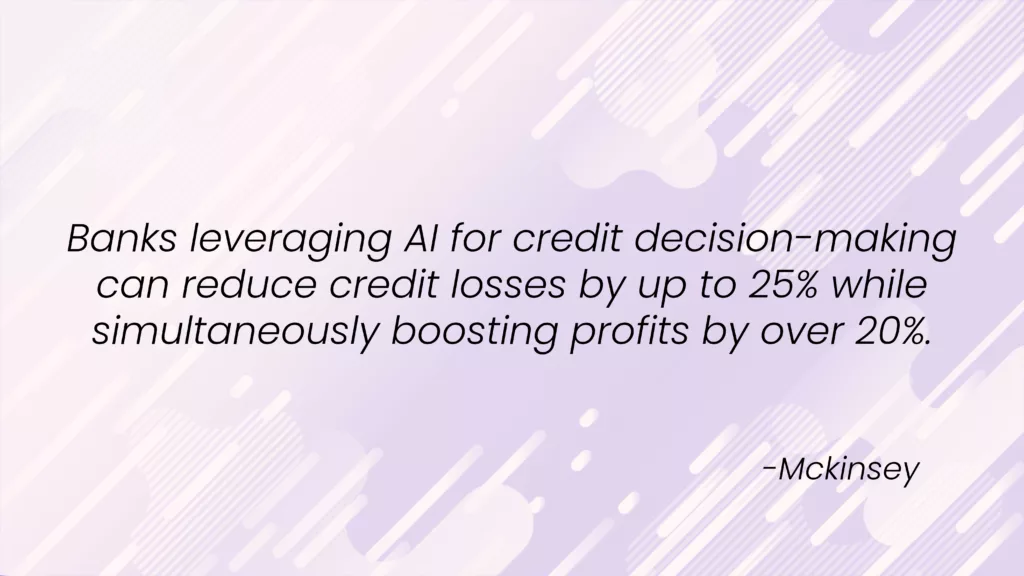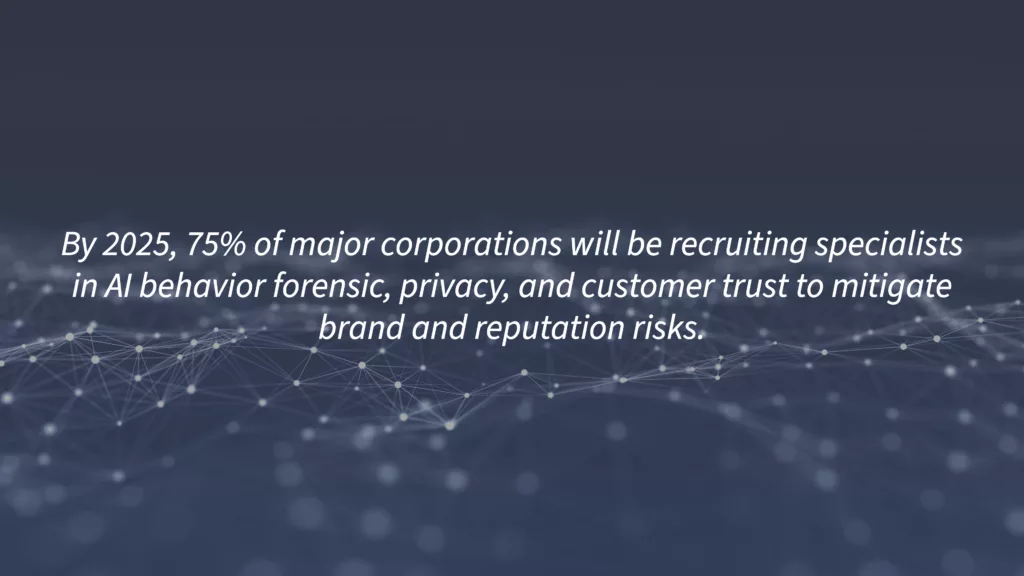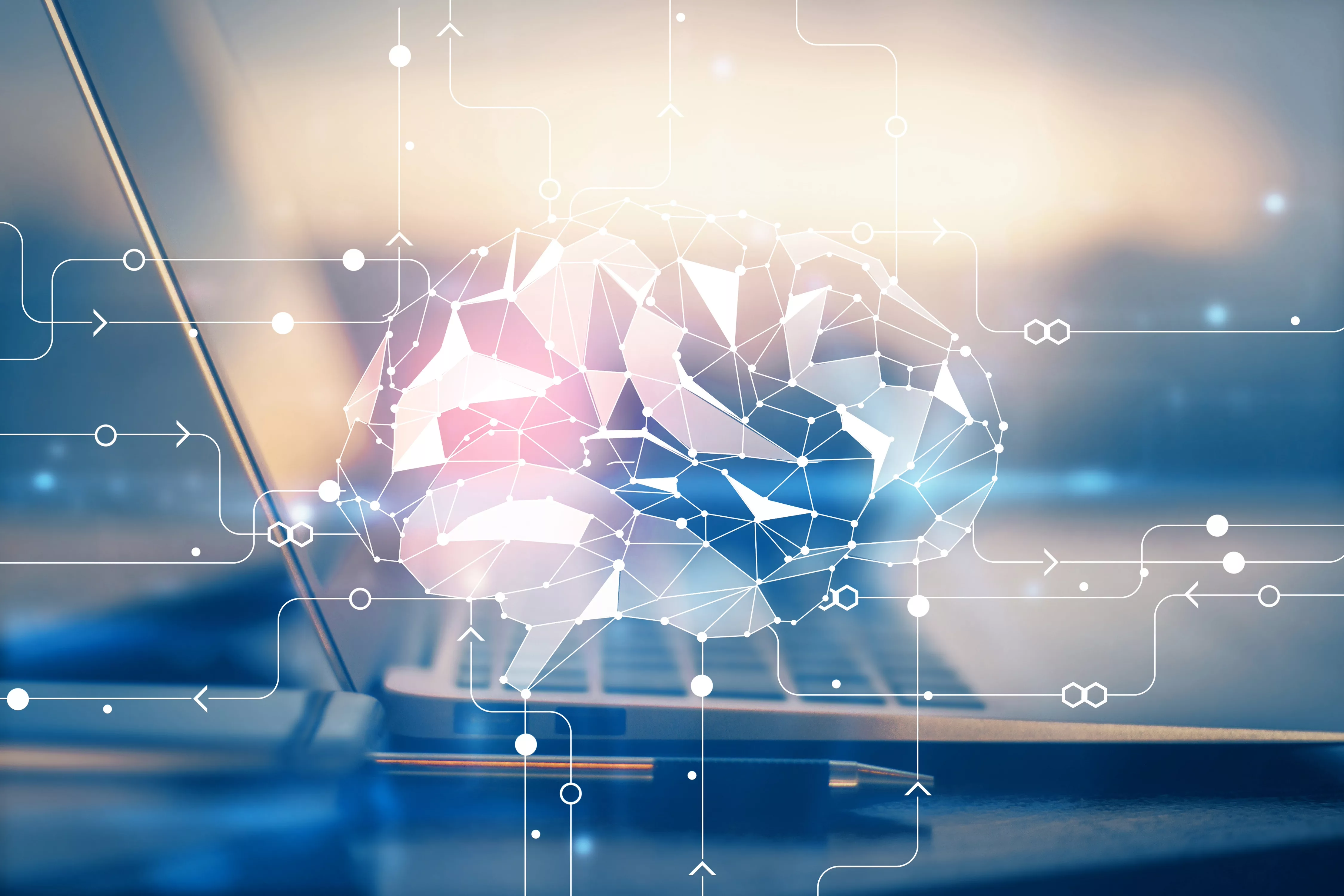Blog Details
7 Powerful Applications of Generative AI in Banking: Revolutionizing Finance with AI Innovation
In today’s digital era, the banking and financial industry is undergoing a significant transformation fueled by technological innovations. One such innovation that is revolutionizing the sector is Generative AI. This form of Artificial Intelligence (AI) holds the potential to reshape traditional banking operations and enhance customer experiences like never before. In this blog, we’ll delve into the top use-cases of Generative AI in banking and financial services, exploring how this technology is driving efficiency, security, and personalization in the industry.
Generative AI, also known as large language models, possesses the capability to learn from vast datasets and generate responses independently. Unlike traditional AI models, Generative AI can analyze historical data, identify patterns, and make informed decisions autonomously. This technology, combined with Robotic Process Automation (RPA), is poised to transform various aspects of banking operations, from fraud detection to risk management and customer service.
Rise of Generative AI in the Banking Industry
Generative AI represents a novel form of artificial intelligence, distinguished by its capacity to learn from extensive datasets and independently generate responses. By analyzing large volumes of existing data, it can identify patterns and trends, enabling it to make informed decisions. In contrast, Robotic Process Automation (RPA) is a software technology focused on automating repetitive tasks like data entry and document processing.
The primary distinction lies in their learning and adaptive capabilities. Generative AI has the ability to process historical data, learn from it to make intelligent decisions, and adjust its approach according to changing conditions. On the other hand, RPA is limited to automating tasks predefined in its programming. As per the Accenture report, 90% of all working hours can be impacted by these large language models like Generative AI.
Generative AI Use Cases in Banking & Finance
The realm of AI and RPA in banking presents a wide array of applications, revolutionizing tasks that were once cumbersome. These encompass transforming customer service through AI-based Chatbots like ChatGPT, implementing AI for advanced fraud detection, leveraging machine learning to forecast financial trends, and tailoring banking services to suit individual preferences.
1. Fraud Detection
AI plays a vital role in the banking sector, particularly in preventing fraud. With cybercrime costs soaring globally, reaching $6 trillion in 2021 and predicted to hit $10.5 trillion by 2025, data security has become a top priority for banks. Traditionally, many banks maintain large fraud detection departments, which can be expensive to operate and may not always be fully effective. However, Generative AI can track transaction details such as location, device, and operating system, flagging any unusual or atypical behavior that deviates from regular patterns. This automation reduces the need for manual scrutiny of transactions, which is time-consuming and prone to errors.
2. Risk Management
For banks, having a robust risk management plan is crucial to maintain an optimal level of risk exposure, identify potential risk areas, and implement measures to safeguard profitability. Inadequate handling of liquidity, credit, operational, and other risks can lead to significant losses. Apart from employing specific software systems to mitigate risks, the integration of generative AI offers a potential solution to minimize losses arising from insufficient risk management practices. By leveraging historical data, Generative AI has the capacity to detect and recognize potential financial risks, offering early alerts on fraud that allow banks to adapt and avert or minimize potential losses.
3. Credit Analysis
Generative AI offers banking agents a powerful tool to evaluate creditworthiness through the analysis of customer credit scores and financial history. Moreover, it can assess the risk associated with loan applications by scrutinizing data from multiple sources, including credit reports, income statements, tax returns, and other financial data. The Generative AI can also examine borrower behavior, bank statements, and account activity to identify any shifts in financial circumstances that may indicate potential default or delinquency risks. Furthermore, for retail and small ticket-size loans, Generative AI enables real-time loan decisions, streamlining the process and reducing the time and costs typically associated with traditional methods.

4. Financial Forecasts
Training AI on historical financial data offers two significant advantages to banks: financial forecasting and synthetic data generation. Generative AI can discern patterns and correlations within the data, facilitating simulations based on hypothetical scenarios. This capability allows banks to assess a spectrum of potential outcomes and make informed plans accordingly. In essence, Generative AI also utilizes the knowledge from the past to empower banks in making well-informed financial decisions for the future while also producing synthetic data for comprehensive analyses.
According to a survey by PwC, 63% of banking executives believe that AI will significantly impact the way they do business in the next five years.
5. Data Privacy
The utilization of synthetic data presents a promising solution to address the challenges posed by data privacy in the banking industry. When customer data cannot be shared due to privacy concerns and data protection regulations, synthetic data can serve as a viable alternative for creating shareable datasets. Moreover, synthetic customer data proves to be highly valuable in training machine learning models to aid banks in determining a customer’s eligibility for credit or mortgage loans and assessing the appropriate loan amount.

6. Underwriting
Generative AI offers valuable support to loan underwriters in their decision-making process. By analyzing customer data, the technology can provide personalized risk assessments and tailored recommendations. Notably, generative AI can automate specific sections of credit memos, such as the executive summary, business description, and sector analysis, streamlining the underwriting process.
According to a report by The Financial Brand, 61% of consumers prefer lenders who use AI to speed up the loan approval process.
7. Marketing & Lead Generation
For banks, investing in targeted marketing is essential to stand out in a competitive landscape and attract new customers. However, this process often involves extensive customer analysis and creative efforts, which can be both costly and time-consuming. Fortunately, Artificial Intelligence comes to the rescue by expediting marketing endeavors. It achieves this by analyzing customer preferences and online behavior, segmenting leads into distinct groups, and allowing for the creation of tailored marketing campaigns for each segment.
Generative AI plays a significant role in this process, aiding in the development of targeted marketing materials and tracking conversion rates and customer satisfaction. By conducting A/B tests to gauge the effectiveness of various strategies, banks can continually refine their marketing approaches, ultimately leading to improved marketing ROI over time.
AI-powered marketing drives a 33% increase in customer satisfaction rates and a 32% increase in marketing ROI.
Generative AI plays a pivotal role in minimizing the risk of errors by detecting inconsistencies and enhancing the overall quality of financial practices and work associated with banks. Professionals in the banking industry benefit from valuable insights into complex financial matters, as Generative AI can identify patterns and trends within banking data. Moreover, Generative AI contributes to improved client services by facilitating quick and precise legal research, enabling banks to provide more accurate and efficient assistance to their clients.
As technology advances, the future holds the promise of witnessing even more sophisticated applications of Generative AI in banking. As a result, customers can expect an enhanced banking experience characterized by efficiency, security, and personalization, fostering greater trust in the industry.


